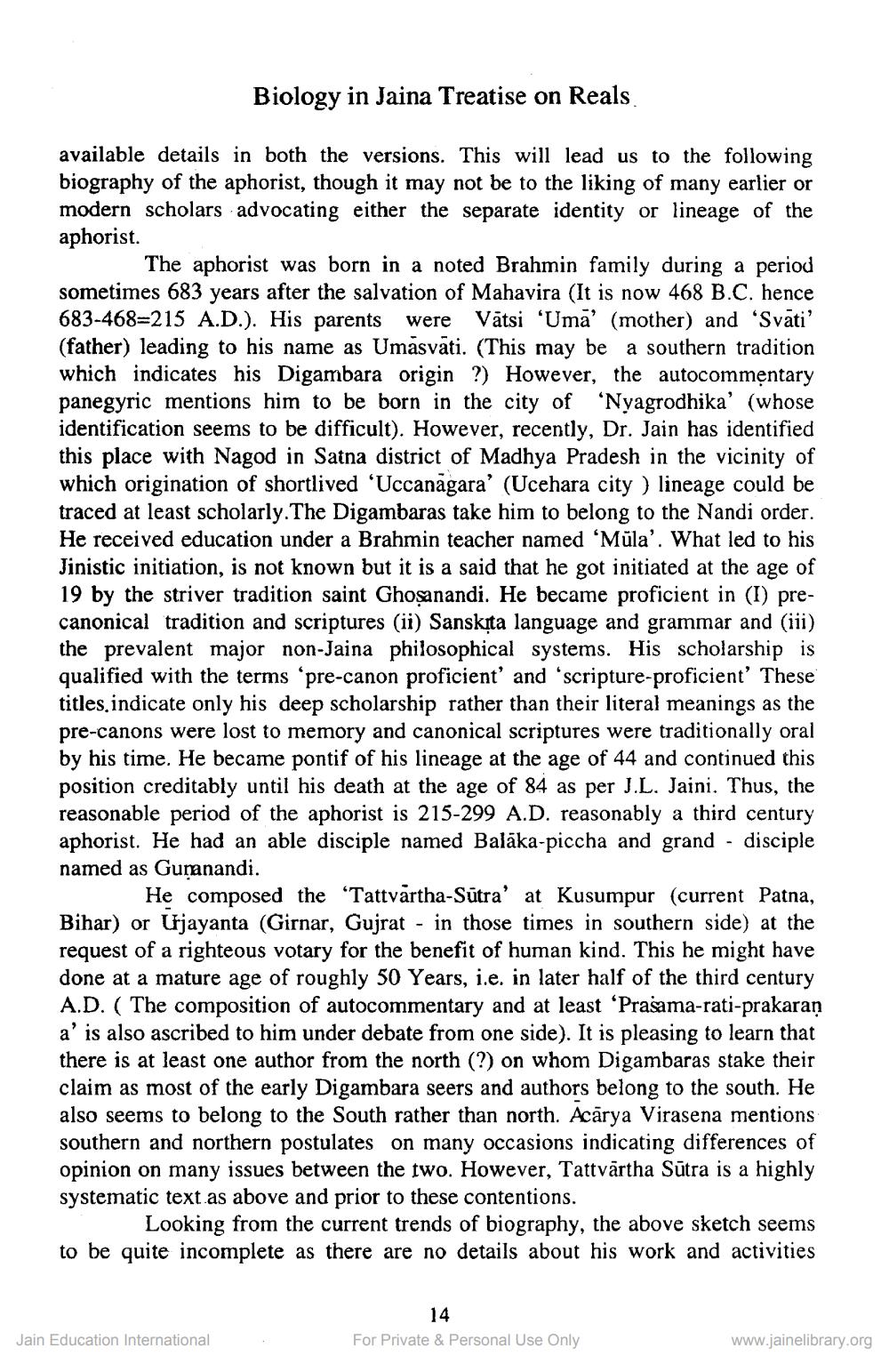________________
Biology in Jaina Treatise on Reals.
available details in both the versions. This will lead us to the following biography of the aphorist, though it may not be to the liking of many earlier or modern scholars advocating either the separate identity or lineage of the aphorist.
The aphorist was born in a noted Brahmin family during a period sometimes 683 years after the salvation of Mahavira (It is now 468 B.C. hence 683-468=215 A.D.). His parents were Vätsi 'Uma' (mother) and 'Svati' (father) leading to his name as Umasvati. (This may be a southern tradition which indicates his Digambara origin ?) However, the autocommentary panegyric mentions him to be born in the city of 'Nyagrodhika' (whose identification seems to be difficult). However, recently, Dr. Jain has identified this place with Nagod in Satna district of Madhya Pradesh in the vicinity of which origination of shortlived 'Uccanagara' (Ucehara city ) lineage could be traced at least scholarly. The Digambaras take him to belong to the Nandi order. He received education under a Brahmin teacher named 'Müla'. What led to his Jinistic initiation, is not known but it is a said that he got initiated at the age of 19 by the striver tradition saint Ghosanandi. He became proficient in (I) precanonical tradition and scriptures (ii) Sanskıta language and grammar and (iii) the prevalent major non-Jaina philosophical systems. His scholarship is qualified with the terms 'pre-canon proficient' and 'scripture-proficient' These titles indicate only his deep scholarship rather than their literal meanings as the pre-canons were lost to memory and canonical scriptures were traditionally oral by his time. He became pontif of his lineage at the age of 44 and continued this position creditably until his death at the age of 84 as per J.L. Jaini. Thus, the reasonable period of the aphorist is 215-299 A.D. reasonably a third century aphorist. He had an able disciple named Balaka-piccha and grand - disciple named as Guranandi.
He composed the “Tattvartha-Sūtra' at Kusumpur (current Patna, Bihar) or Urjayanta (Girnar, Gujrat - in those times in southern side) at the request of a righteous votary for the benefit of human kind. This he might have done at a mature age of roughly 50 Years, i.e. in later half of the third century A.D. ( The composition of autocommentary and at least 'Prasama-rati-prakaran a' is also ascribed to him under debate from one side). It is pleasing to learn that there is at least one author from the north (?) on whom Digambaras stake their claim as most of the early Digambara seers and authors belong to the south. He also seems to belong to the South rather than north. Acārya Virasena mentions southern and northern postulates on many occasions indicating differences of opinion on many issues between the two. However, Tattvārtha Sūtra is a highly systematic text as above and prior to these contentions.
Looking from the current trends of biography, the above sketch seems to be quite incomplete as there are no details about his work and activities
14
Jain Education International
For Private & Personal Use Only
www.jainelibrary.org




